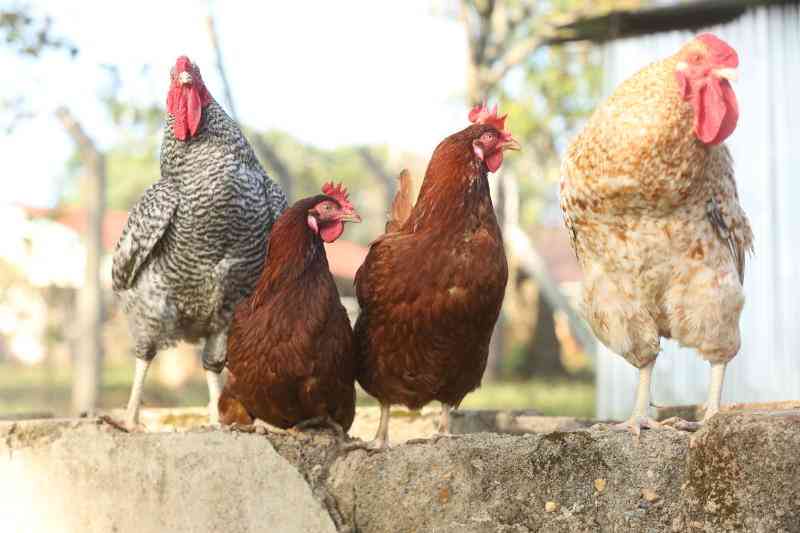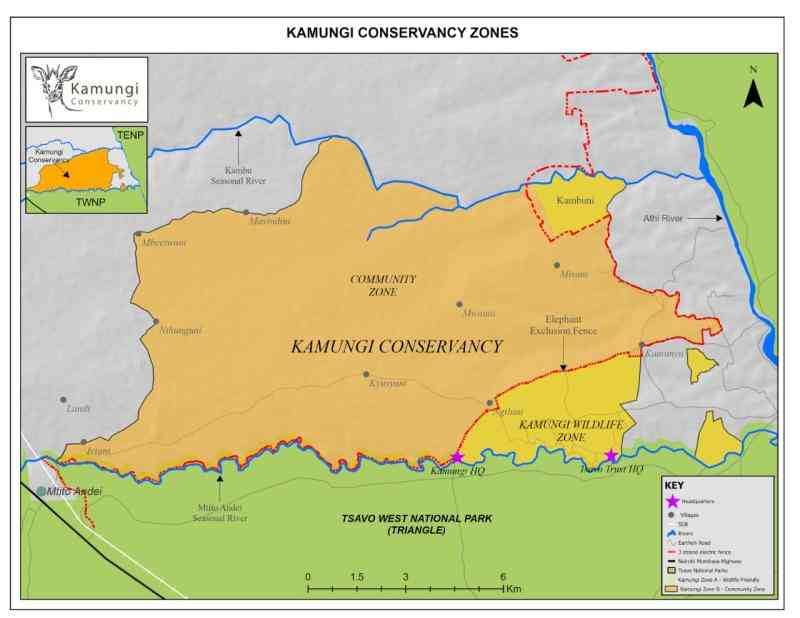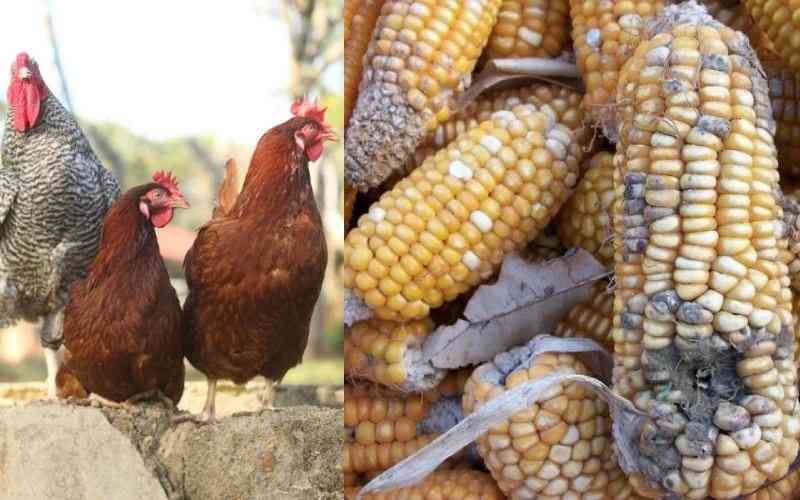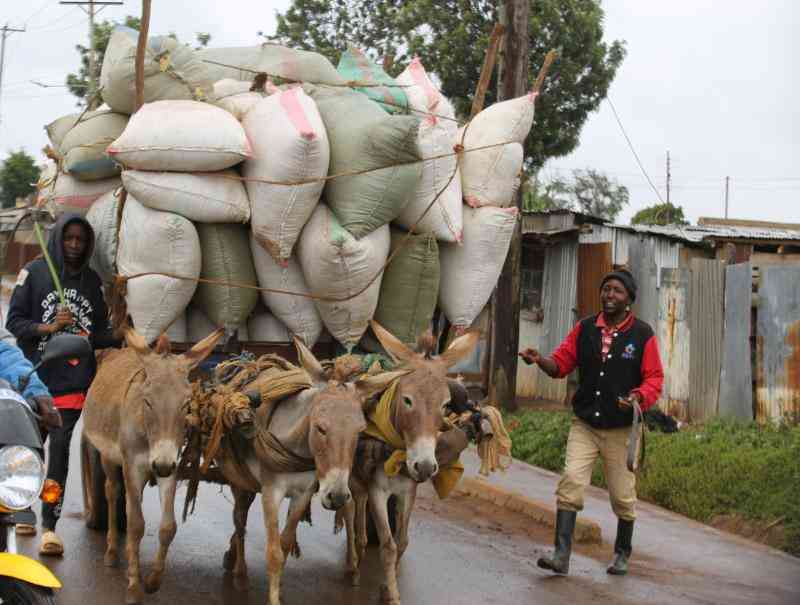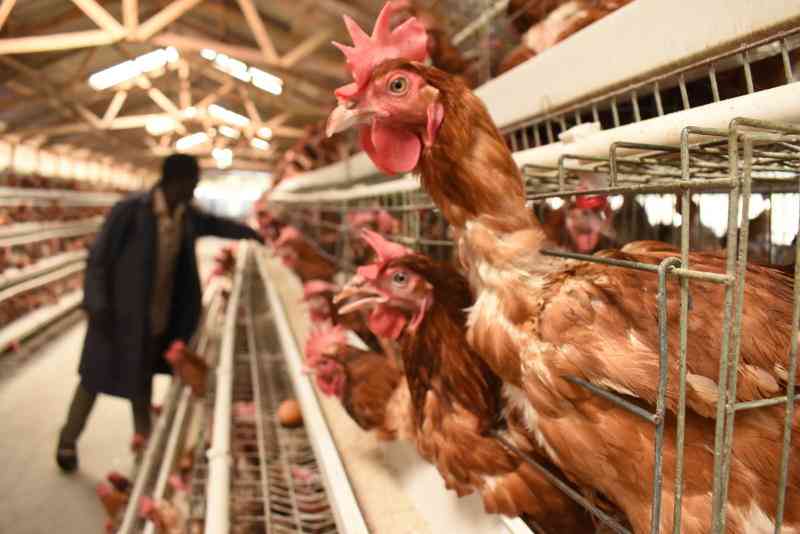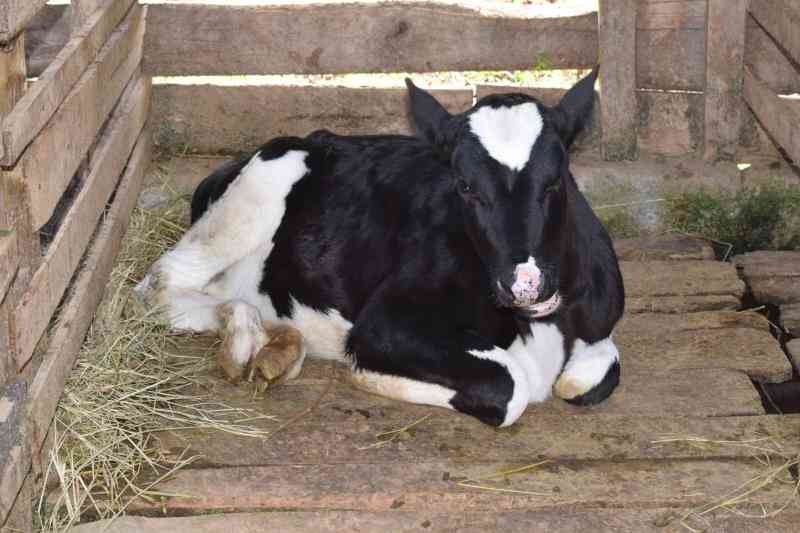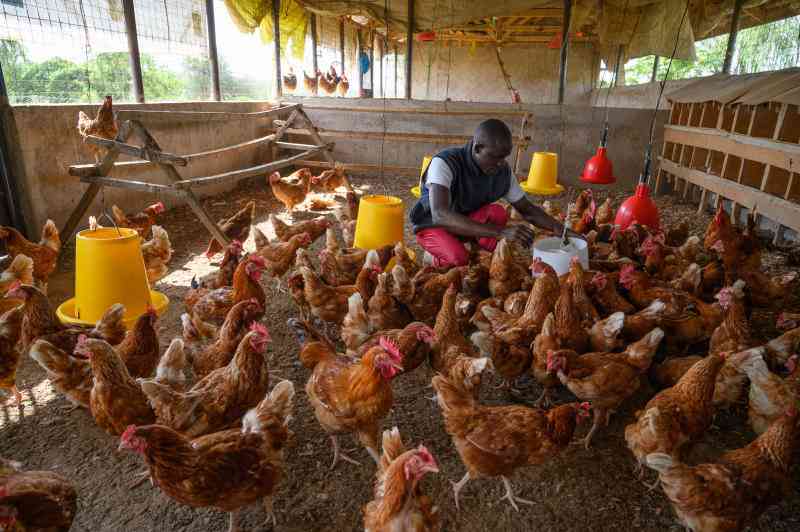
Poultry houses should be constructed to take advantage of the prevailing winds to improve the efficiency of natural ventilation. [File, Standard]
Ventilation can be described as the circulation of fresh air through the flock house and the exhaustion of stale air out of the flock units.
This is achieved by the air passing from one side of the house and exhausting through the opposite side.
Ventilation of poultry houses serves several functions, including removing excess heat and moisture, providing oxygen while removing harmful gases, and reducing dust, hence improving the air quality.
In a tropical climate like ours, poultry houses are open-sided and hence ventilation is managed by opening the curtains from top to bottom.
This allows air from outside into the house. When it gets cold, the curtains are raised and closed to restrict the flow of air. You should allow minimum ventilation to avoid chicks getting suffocated.
Curtains are normally made from clean and disinfected feed sacks stitched together. Never use polythene plastics as curtains in a flock unit. The curtain should be fastened to the sidewall at the bottom and opened from the top. This will minimise wind or drafts blowing directly on the birds. To ensure effective ventilation, every effort should be made to open the curtain on both sides of the building to the same level unless the wind is consistent from one side of the flock house. Should this be the case, then the curtain on the side should be opened less than the other side.
Poultry houses should be constructed to take advantage of the prevailing winds to improve the efficiency of natural ventilation. Narrow houses (10 meters/33 feet or less) with higher-pitched roofs provide more natural air movement. Airflow is measured using a speed detector. Airspeed as slow as 0.5m/s can cause a significant wind-chill effect on a day-od chick, resulting in inappetence and growth retardation. Toxic gases such as ammonia, carbon monoxide and carbon dioxide should be monitored as high levels can cause instant mortality and reduce body weight gain by as much as 20 per cent.
Ammonia is produced outside the chicken on the litter or manure in a poultry house. Ammonia essentially is a by-product of the breakdown of uric acid into urea, while uric acid is produced by the kidneys. High ammonia is produced when there is excessive wet manure. We associate it with poor house ventilation, high relative humidity, poor diet and sick birds showing excessive diarrhoea and water loss.
How does it affect the birds? Excessive ammonia in the broiler poultry shed will reduce the average daily weight gain, will reduce feed efficiency and for laying flocks it will cause a drop in egg production. In severe cases, respiratory diseases may set in, and birds will start to experience symptoms and signs like snicking, tracheal rales, inflammation of the air sacs, red eyes and may succumb to pneumonia. In complicated cases, birds may lose eyesight, and develop lameness due to ammonia burns on the feet, and carcass rejection due to ammonia burns of the sternal meat.
Carbon dioxide is mainly produced by the birds during breathing and during brooding when oxygen is consumed during the burning of charcoal. Excess carbon dioxide will cause instant death.
Carbon monoxide poisoning is by far the most poisonous gas encountered in a poultry shed and will kill in minutes. The clinical signs include uneasiness, stupor, drowsiness, laboured breathing, loss of coordination and tissues appearing pink. If you are using gas brooding, avoid yellow flames, make sure brooders are well maintained, and provide enough ventilation to reduce the impact.
Excessive dust, on the other hand, comes from feathers, skin, down, litter, manure and from the environment. If largely inhaled by birds, dust will destroy the mucosal linings of the respiratory tracks, creating an environment conducive to the proliferation of viruses, bacteria, mycoplasma, and moulds. It will result in infections of the air sacs, nares, the eyelids, and inflammation of the skin. In the long run, the birds will show poor growth rates, low feed conversion or efficiencies and increased mortality. Ensure the poultry unit is fully ventilated by opening the curtains and if the air movement is still, consider the use of extraction fans to move the fresh air in and stale air out.
[For more information, contact [email protected]]
 The Standard Group Plc is a multi-media organization with investments in media platforms spanning newspaper print
operations, television, radio broadcasting, digital and online services. The Standard Group is recognized as a
leading multi-media house in Kenya with a key influence in matters of national and international interest.
The Standard Group Plc is a multi-media organization with investments in media platforms spanning newspaper print
operations, television, radio broadcasting, digital and online services. The Standard Group is recognized as a
leading multi-media house in Kenya with a key influence in matters of national and international interest.


